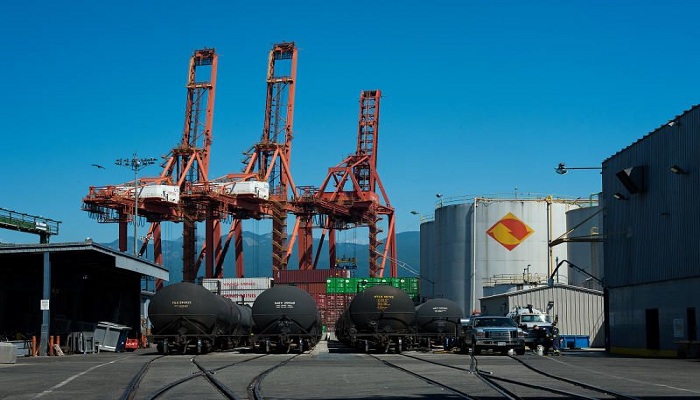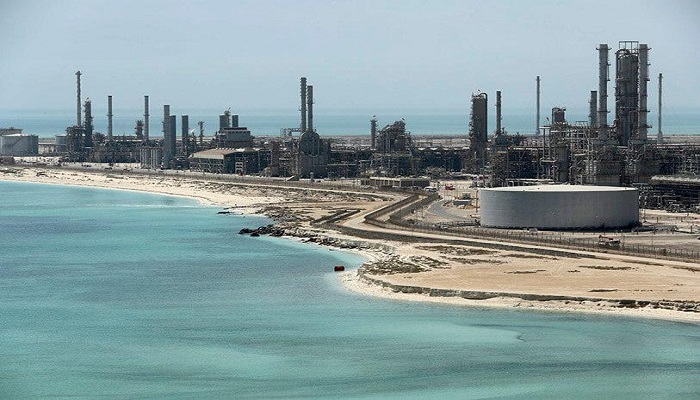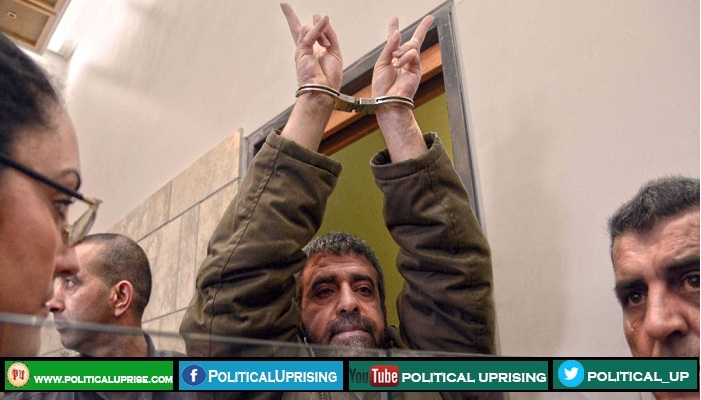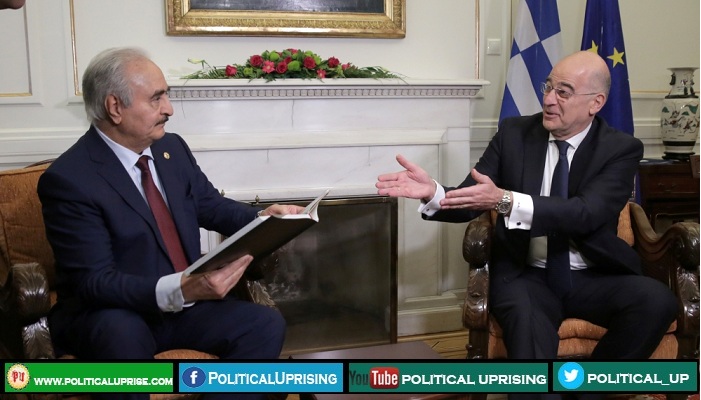Brent crude futures rose above $70 first time since COVID pandemic began while US crude was its highest in two years.
Brent crude futures surged above $70 a barrel on Monday for the first time since the COVID-19 pandemic began, while US crude touched its highest in more than two years, following reports of attacks on Saudi Arabian facilities.
Brent crude futures for May hit $71.38 a barrel in early Asian trade, the highest since January 8, 2020, and were at $71.11 a barrel by 02:55 GMT, up $1.75, or 2.5 percent.
US West Texas Intermediate (WTI) crude for April rose $1.60, or 2.4 percent, to $67.69. The April WTI price touched $67.98 a barrel earlier, the highest since October 2018.

Yemen’s Houthi forces fired drones and missiles at the heart of Saudi Arabia’s oil industry on Sunday, including a Saudi Aramco facility at Ras Tanura vital to petroleum exports, in what Riyadh called a failed assault on global energy security.
Ras Tanura is the world’s largest oil terminal, capable of exporting roughly 6.5 million barrels a day nearly 7 percent of oil demand and as such is heavily protected. The port includes a large storage tank farm where crude is kept before it is pumped into super-tankers.
Global oil prices extend slide, investors fear refineries to remain hobbled
The drone and missile attacks were intercepted and crude production appeared to be unaffected. But the latest in a series of assaults claimed by Iran-backed Houthi rebels led oil prices to climb above $70 a barrel.
The attacks are the most serious against Saudi oil installations since a key processing facility and two fields came under fire in September 2019, cutting production for several days and exposing the vulnerability of the kingdom’s petroleum industry. That was claimed by Yemen’s Houthi rebels, although Riyadh pointed the finger at archrival Iran.
“We could see further upside in the market in the near-term, particularly as the market probably now needs to be pricing in some sort of risk premium, with these attacks picking up in frequency,” ING analysts said in a report, noting that this was the second attack this month following an incident in Jeddah on March 4.
Brent and WTI prices are up for the fourth consecutive session after OPEC and its allies decided to keep production cuts largely unchanged in April.
Despite fast-rising crude prices, Saudi Arabia’s oil minister has voiced doubts about a solid recovery in global energy demand.
“The decision to keep quotas unchanged signals the group’s intent to drawdown inventories further, without concern of over tightening the market,” ANZ analysts said in a note. “It also suggests they see little threat from rising output elsewhere.”
Israel-UAE oil deal place Red Sea Coral reefs under threat
However, the energy minister in the world’s third-largest crude importer, India, said higher prices could threaten the consumption led-recovery in some countries.
Higher prices have also encouraged US energy firms to add oil and natural gas rigs for a second week in a row, energy services firm Baker Hughes Co said on Friday.
The year-end $900bn stimulus was signed by Trump on December 27, a week after Congress passed it. The IRS began sending electronic payments out two days later, on December 29.
Shell ordered to pay Nigerian farmers over oil spills
Biden left the IRS plenty of room after Senate passage on Saturday, saying his plan “would get checks out the door this month”.
But Democrats in Congress, including Senator Bob Casey, were more optimistic on Sunday. Payments will go out “in very short order,” Casey said, adding “The Treasury Department is prepared for this. They’ve been dealing with this issue since last March.”



